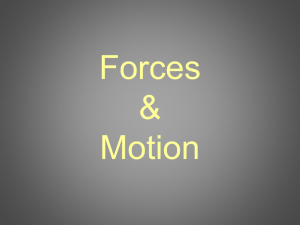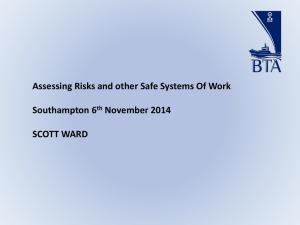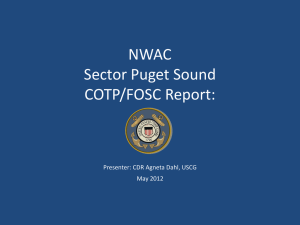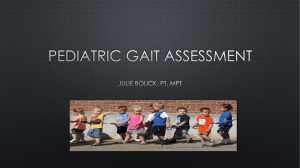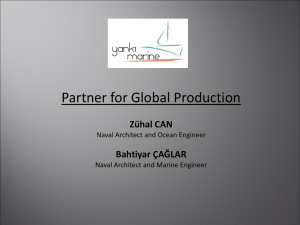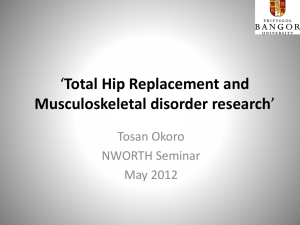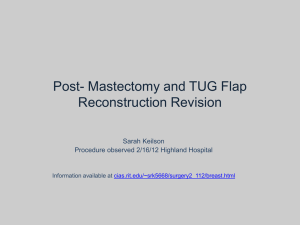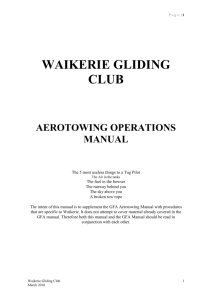Tug Towage Safety Questionnaire
advertisement
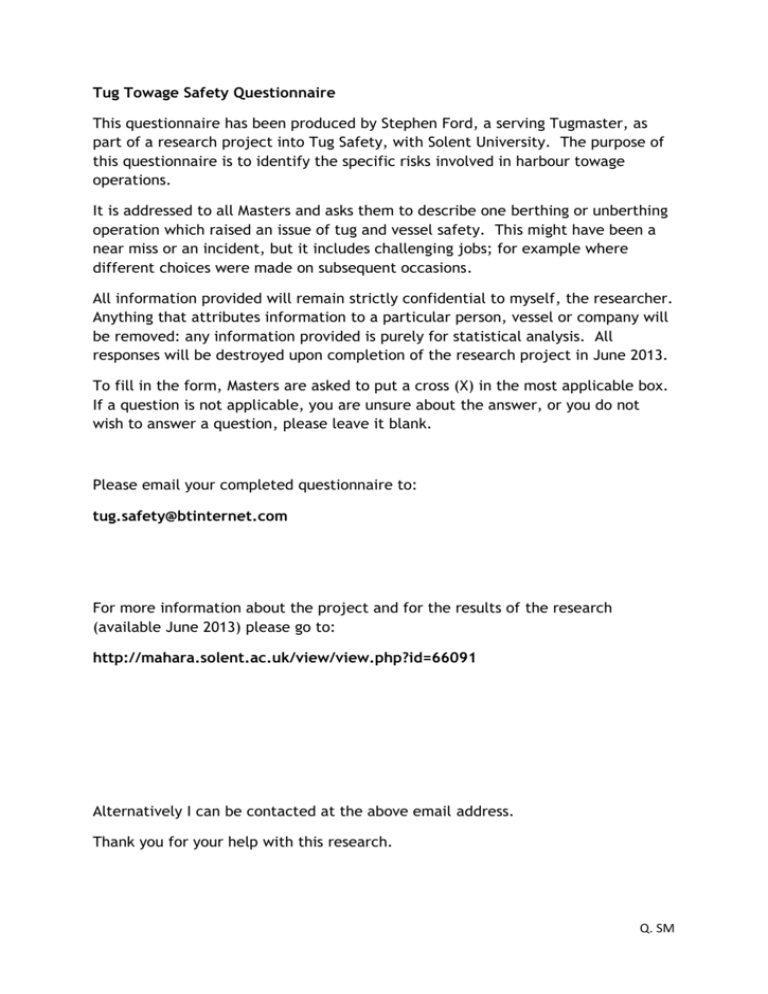
Tug Towage Safety Questionnaire This questionnaire has been produced by Stephen Ford, a serving Tugmaster, as part of a research project into Tug Safety, with Solent University. The purpose of this questionnaire is to identify the specific risks involved in harbour towage operations. It is addressed to all Masters and asks them to describe one berthing or unberthing operation which raised an issue of tug and vessel safety. This might have been a near miss or an incident, but it includes challenging jobs; for example where different choices were made on subsequent occasions. All information provided will remain strictly confidential to myself, the researcher. Anything that attributes information to a particular person, vessel or company will be removed: any information provided is purely for statistical analysis. All responses will be destroyed upon completion of the research project in June 2013. To fill in the form, Masters are asked to put a cross (X) in the most applicable box. If a question is not applicable, you are unsure about the answer, or you do not wish to answer a question, please leave it blank. Please email your completed questionnaire to: tug.safety@btinternet.com For more information about the project and for the results of the research (available June 2013) please go to: http://mahara.solent.ac.uk/view/view.php?id=66091 Alternatively I can be contacted at the above email address. Thank you for your help with this research. Q. SM Details of the berthing or unberthing operation Your Vessel 1. Vessel type (Please state) (Container, barge, etc.) … ………………………………………….. 2. Approximate size (deadweight, tonnes) 3. Bow form Coaster or Barge Handy Large (<10,000t) (10,00050,000t) (51,000160,000) Fine Moderate Broad Very Large Not known / other (>160,000) Unsure / other (Please state) The Tug 4. Type of tug Conventional 5. Tug Bollard Pull approximate (tonnes) Moderate <30t (propeller/ rudder) ASD Tractor Not known / other Medium 31t - 65t High > 66t Not known / other …… Tug Assistance Provided 6. Tug Help Push &/or pull Tow on a line 7. Tug Position 8. Whose line Tug Forward Amidships Not known / other (Please state) …… Tug Aft Not known / other (Please state) Tug’s Ship’s Unsure / Not Appropriate External factors Conditions / Weather 9. Wind (Beaufort Scale) 10. Swell height (m) 11. Current (knots) Low <F3 Moderate F4-F6 Gale F7-F83 Storm >F9 Unsure Calm <0.2 Moderate 0.3 – 0.9 Rough 1.0-1.5 Storm >1.5 Unsure Low <1 Moderate 2-3 Strong >3 Unsure 12. Other external condition (please state) ………………………………….. Q. SM ……. The Safety Issue The risk (to vessel or tug) 13. How likely were the following outcomes in this case a. Collision b. Grounding c. Foundering d. Major damage e. Minor damage f. Loss of life g. Major Injury h. Minor injury i. Pollution Not likely / Not applicable Possible Likely Highly likely Inevitable The event 14. How would you best describe the event: Challenging / Instructive Near miss Incident Accident Other Brief description 15. Please use this space to briefly describe any other factors not already covered elsewhere. Q. SM Extent to which different factors were involved Factors involved 16. Indicate the extent to which the following factors influenced the safety issue. No effect / Some effect Important Fundamental Factor Not Applicable effect effect Interaction between vessel & tug (e.g. tug enters ship’s bow pressure wave) Girting, Girding or Tripping (potential for or actually observed) Insufficient detailed planning of tow (e.g. pilot orders insufficient tug bollard pull) Speed through water too fast (e.g. tug unable to maintain required position) Ship size too large for tug/s (e.g. windage too great for tug bollard pull) Ship too powerful for tug/s (e.g. main engines overpowering tug pull) Wrong tug type used for job (e.g. conventional tug used in vulnerable position) Lack of manoeuvring space (e.g. restrictions of shallow water, buoys or piers) Excessive swell (i.e. snatching or parting tow line) Excessive current (e.g. tug finds it difficult to control vessel) Excessive wind strength (e.g. too great for tug power) Practical difficulties (e.g. tug needs to remain in ‘critical area’ to pass tow line) Ship securing arrangements (e.g. suitable fairleads in wrong position) Tug equipment inadequate (e.g. failure of emergency quick release) Inadequate tugs communication equipment (e.g. poor VHF) Language difficulties (e.g. lack of spoken English) Human factors (e.g. tug or ship’s crew poor concentration, fatigue, etc.) Training insufficient (e.g. more training in working with tugs would be beneficial) Other (please state: and continue in ‘Brief Description’ above) ……………………….. Thank you for completing this questionnaire; please email it to: tug.safety@btinternet.com Q. SM



